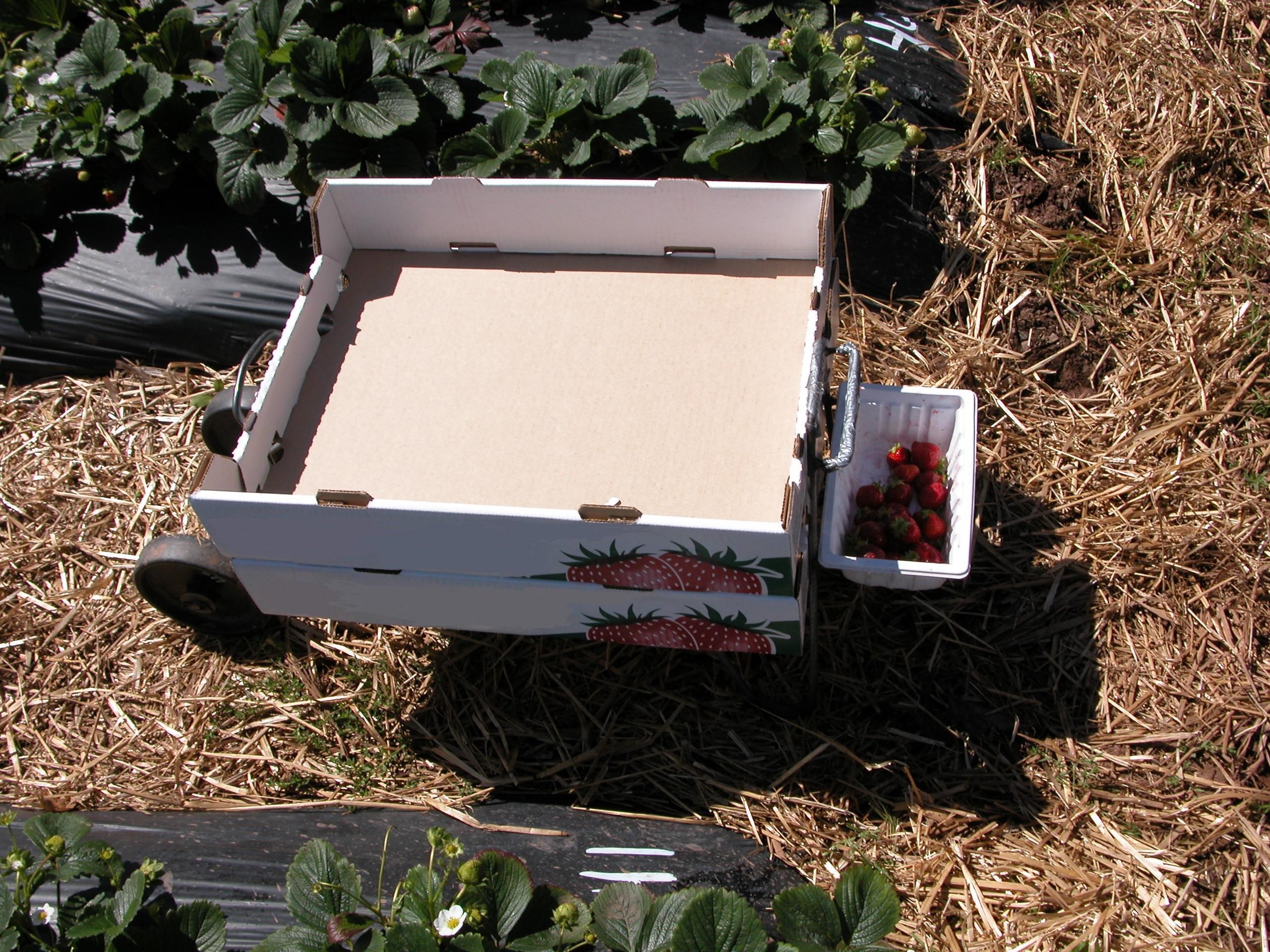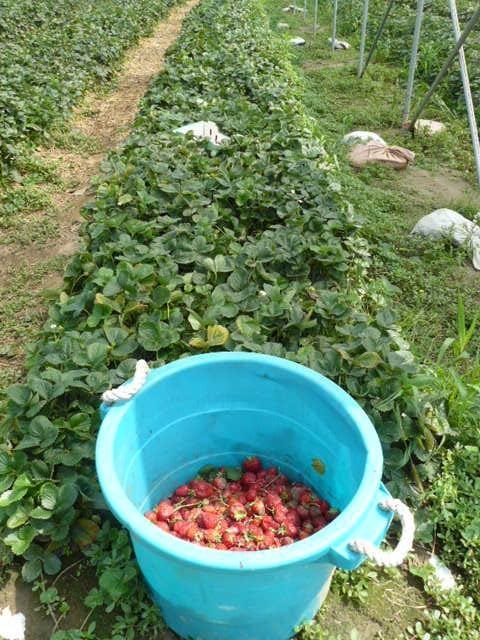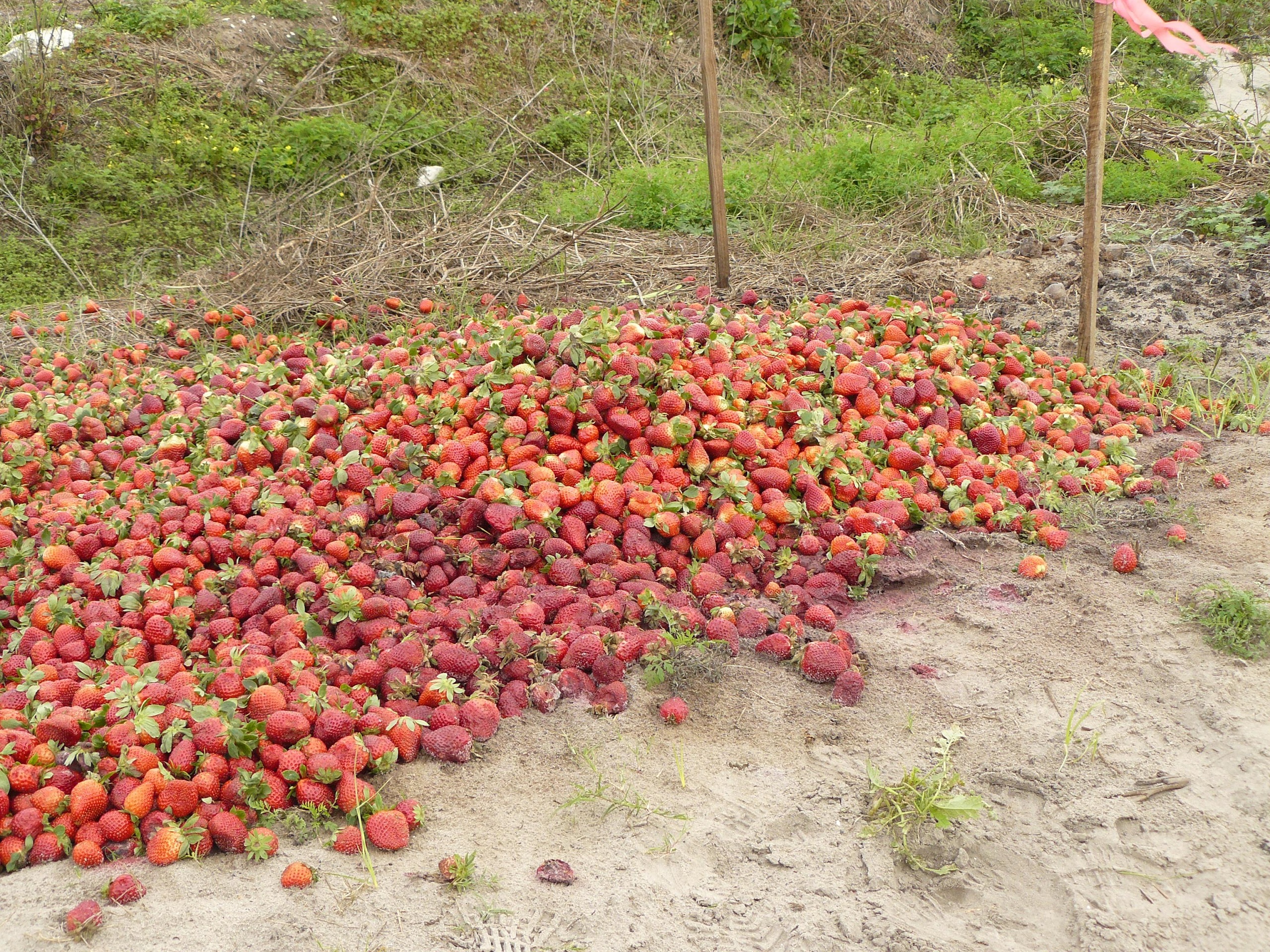Management guidelines for spotted wing drosophila in Ontario
Information on biological, cultural and chemical control for spotted wing drosophila.
Introduction
Spotted wing drosophila (SWD) is an invasive vinegar fly that has rapidly spread across much of North America. OMAFRA surveys in 2011–2015 indicate that SWD is widespread in all fruit growing regions in Ontario.
Spotted wing drosophila is attracted to and can lay eggs in healthy ripening fruit, rather than overripe or damaged fruit. Cherries, blackberries and raspberries, blueberries, strawberries and a wide variety of other soft-skinned fruit are susceptible to damage. To avoid crop losses, growers should learn to identify the pest and its damage.
Management of SWD will require significant changes to both crop management practices and insecticide use patterns. In most cases, insecticides are required to control this pest when fruit is ripening.
Current information on SWD, including updates on SWD activity during the growing season, will be posted on the OMAFRA website at Ontario.ca/spottedwing.
Growers and scouts are encouraged to watch for spotted wing drosophila flies and damage, and to share information with OMAFRA.
Biological control
Wasps parasitizing SWD have been identified in the Pacific Northwest, but biological controls are not providing economic control at this time. Research is underway in areas where the pest is well established to identify predators and/or parasites. Surveys for natural enemies are also being conducted in Ontario.
Cultural control
As pest populations increase, the potential for crop damage also increases. Cultural controls may help reduce populations of SWD by eliminating places where they develop and reproduce. Consider the following practices as part of an integrated pest management strategy.
Identify alternative host plants near your crop: SWD has many wild hosts where it probably completes one or more generations. The role of these wild hosts is not completely understood. We expect that some of these hosts support early generations of SWD which then migrate to susceptible fruit crops. On the other hand, wild hosts often provide habitat for beneficial insects that help to control crop pests, including SWD. Growers should be aware of nearby wild hosts, such as brambles, buckthorn, pincherry, dogwood, elderberry, and pokeweed that support build-up of SWD populations. Crops adjacent to wild hosts are at highest risk for early damage. Keep field edges tidy and free from wild hosts, especially wild brambles. If it is not possible to remove wild hosts, try to cut them back below the fruiting zone. Do not apply insecticides to non-crop areas.
Timely harvest: This is extremely important for SWD control. Shorten picking intervals where possible. For example, harvest raspberries and blackberries every second day. Pick your crop early, clean and often. Early fruit from fall-bearing raspberries should be harvested, even though the harvestable quantities are small.
Sanitation: Instruct workers to remove unmarketable fruit from the field during harvest (Figure 1 and Figure 2).
Bury this fruit to a depth of more than 30 cm at the end of each day, or solarize fruit by covering with plastic and sealing the edges. Composting unmarketable fruit (cull fruit) is not a reliable way to destroy SWD eggs and larvae in fruit. Larvae can complete their development in unmarketable fruit. Do not leave culls exposed for more than one day (Figure 3).
Prune, trellis or manage the crop canopy to improve harvest efficiency and spray coverage.
In dry environments, or on bare ground, crushing or mowing fallen fruit might help control larvae, which are sensitive to desiccation.
Keep equipment and processing areas free of old fruit.
Be aware of backyard host plants and compost bins that are potential sources of SWD.
Movement of infested fruit can introduce SWD into new areas. If you bring produce to your farm from other farms or areas, bury or carefully dispose of waste product.
Chemical control
If SWD flies are present in your area - regardless if they have been trapped on your farm or not - insecticides will be required to protect fruit as it begins to ripen and throughout the harvest period. Adult SWD are attracted to ripening fruit. Crops are susceptible to attack as fruit begins to turn colour and ripens.
Risk = SWD Flies + Ripening Fruit
Several insecticides are registered for SWD control. For more information and updates on these products, see Ontario.ca/spottedwing.
Mode of action: These insecticides control adult SWD flies. SWD flies are killed when sprayed directly or when they are exposed to residues of insecticide on the treated fruit and leaves. Female SWD lay eggs under the fruit surface. SWD eggs and larvae are not controlled by insecticides that are currently available for use.
Consider your pest management program for other pests and how this will affect SWD. Many of the reduced-risk insecticides used to manage other pests are not effective against SWD. When spraying for other pests close to harvest, choose insecticides that will control both SWD and other pests.
Thresholds: Traps are a useful indicator of SWD presence, but they are not a reliable indicator of early pest pressure. There are no action thresholds based on captures using the existing vinegar-based traps. Do not wait for SWD to be trapped on your farm; consider regional trapping results. Populations of SWD increase as the season progresses, so late harvested crops are at a higher risk for damage.
Bee toxicity: All of the recommended products are toxic to bees. Avoid application when crops are blooming and bees are in the field. If insecticides are necessary during this time, they should be applied at night or in the evening when bees are not foraging.
Preharvest intervals: Each insecticide has specific pre-harvest intervals. These vary depending on the crop. Be sure to follow the product label. Use clear signage and barriers to prevent workers and customers from harvesting fruit before the preharvest interval is complete.
Re-application: There are multiple, overlapping generations of SWD. Depending on the crop, several well-timed sprays, at 7-14 day intervals, will be necessary to protect fruit through the ripening period. Maintain continuous coverage until harvest is complete. Weather conditions may limit the residual activity of some products. For example, pyrethroid insecticides, such as MAKO, are less effective in hot weather, (i.e. over 26° C) and very effective in cooler conditions. Each product has specific re-application intervals and maximum number of applications/season. Check labels for application intervals, restrictions and rates.
Spray coverage: Use enough water and pressure to ensure adequate coverage, and use spray equipment that will allow effective coverage. SWD adults are more active in the lower, shaded part of the crop canopy. Place water sensitive paper in this area to assess spray coverage.
Resistance management: To limit the development of resistance, rotate insecticides from different groups. Resistance to Pyganic, a pyrethroid, has already been identified in California.
Effect on beneficial insects: Insecticides applied for SWD can reduce populations of beneficial insects and mites. For example, pyrethroid insecticides, such as MAKO are particularly toxic to mite predators. Watch carefully for outbreaks of pests such as two-spotted spider mite, cyclamen mite, aphids, and scale insects.
Postharvest applications: Postharvest sprays for SWD are not necessary unless there is fruit left in the field after harvest and there are susceptible crops nearby.
Other pre-cautions: Do not spray insecticides in non-crop areas, such as the ground, hedgerows, woods, or bush, even if these areas contain wild hosts for SWD
Use salt water tests to determine the effectiveness of your SWD control program. Larvae from infested fruit will float if placed in salt water. See "Monitoring for spotted wing drosophila in Ontario" at Ontario.ca/spottedwing.
For more information
For more information on SWD management, contact the Ontario Ministry of Agriculture, Food and Rural Affairs:
Hannah Fraser, Entomologist - Horticulture
(519) 824-4120, et 52671, hannah.fraser@ontario.ca
Erica Pate, Fruit Crop Specialist
(519) 426-2238, pam.fisher@ontario.ca
Wendy McFadden-Smith, Horticulture IPM Specialist
(905) 562-3833, wendy.mcfadden-smith@ontario.ca
Denise Beaton, Crop Protection Specialist
(519) 826- 6594, denise.beaton@ontario.ca
Melanie Filotas, Horticulture IPM Specialist
(519) 426-4434, melanie.filotas@ontario.ca
Amanda Green, Tree Fruit Specialist
(519) 426-1102, amanda.green@ontario.ca


